How to Write a Resume That Stands Out
Writing a resume has always been hard. How do you condense all of your experience into one page (or even fill out one page if you’ve just graduated)? How do you make it look good, but still easily readable? Now, with the introduction of applicant tracking systems (aka the bots that scan your resume), the resume writing process has become even more challenging.
But thankfully, there are some ways to make your resume work for you. I talked to Kristi DePaul, CEO of Founders and a personal branding expert, about how to make my resume stand out. She taught me exactly what to do to get my resume past the bots, into the hands of a hiring manager, and on top of the “accept” pile. I even made a new resume based on her guidance. If you need a template to base yours off of, you can check out my example resume here.
PAIGE COHEN: So, you’re writing a resume, and you want it to be perfect. What does it look like? What does it sound like? I want to look professional, but I want to be myself. But do companies care about who I am? Do I have enough to fill a page? I don’t have five years of experience. This is an entry level job. This looks so old fashioned. Is this really still how you’re supposed to do a resume these days?
Do you know it takes hiring managers less than 10 seconds to decide whether your resume lands in the accept or the reject pile? There is a lot riding on this piece of paper, and it’s important to know how to catch a recruiter’s attention.
KRISTI DEPAUL: It’s a shame that recruiters, at the moment, seem to have the attention span of a goldfish. But it’s also a necessity because there are so many roles to fill, and so many resumes to read, and only so much time.
PAIGE COHEN: That’s Kristi DePaul. She’s a content creator who writes a lot about career navigation and personal branding. She helps people with resumes, productivity, job interviews, and lots of other stuff.
So, I heard that when a human looks at our resume, they’re giving it like 10 seconds of consideration before it lands in the accept or reject pile. Can you tell us what’s happening in those 10 seconds? Where their eyes go first. What makes them say “yes” or “no?”
KRISTI DEPAUL: As someone is scanning your resume, of course they’re going to notice your name. It’s at the very top, and then moving on down to your most recent experience, and then do they have the requisite skills and education?
PAIGE COHEN: Kristi has a lot of advice for people around how to write resumes. Here’s what she had to say. There used to be this trend where you’d write a little mission statement at the top of your resume. Like, “I’m an experienced, thoughtful, ambitious person who’s interested in this industry, et cetera, et cetera.” But just ditch that. It’s taking up real estate on your resume.
Kristi says you should just replace this with a simple headline that describes you and your specialty, like content creator or marketing specialist. And this can be really useful if you’re trying to switch industries.
You do want to hype yourself up on your resume but not too much where it seems cliche or insincere. Instead, use bullet points to list out your achievements, data, responsibilities, and specialties.
KRISTI DEPAUL: Well, I like to see when someone adds a single line beneath the organization name that says, “this is the premier professional development association for engineers.” And you’ve just given me like a cheat sheet to your resume.
PAIGE COHEN: If you’re early in your career or fresh out of school, it can be really daunting to fill out a blank resume, especially if you feel like you just don’t have a lot of experience. But you do have more experience than you think.
KRISTI DEPAUL: I would look at your past project experience. I would even look at what you might think are roles that aren’t at all applicable. So, I had a slew of retail and service roles — way back in the day I was a Subway sandwich artist. There’s a lot of things I learned folding clothes at American Eagle. There’s a lot of transferable skills that you gain from roles that even seem like they’re way outside of what you want to do. Whether those have to do with interfacing with the public, or whether it’s customer service in some way. I would take a hard look at what you’ve done, whether it’s internships, volunteer work. There are a lot of ways that you can position yourself as somebody who has more experience than you really think.
PAIGE COHEN: I know one resume is hard enough, but 75% of US employers use AI technologies to filter through resumes. It’s mostly used to save recruiters time and narrow down a high volume of candidates. But yeah, robots are analyzing you.
KRISTI DEPAUL: It’s almost impossible to predict if you’re going to do something, formatting-wise, or if you’re going to say something that is going to either downgrade your resume, or possibly get it excluded altogether. If you’re giving one to a human being, it could be a lot more elaborately designed. You could create something really beautiful and a little bit more complicated. But if you’re submitting something through an applicant tracking system, it should be a standard Microsoft Word document or whatever they’re requiring — a PDF — and it should be free of a lot of ornamentation that could throw the applicant tracking system totally off.
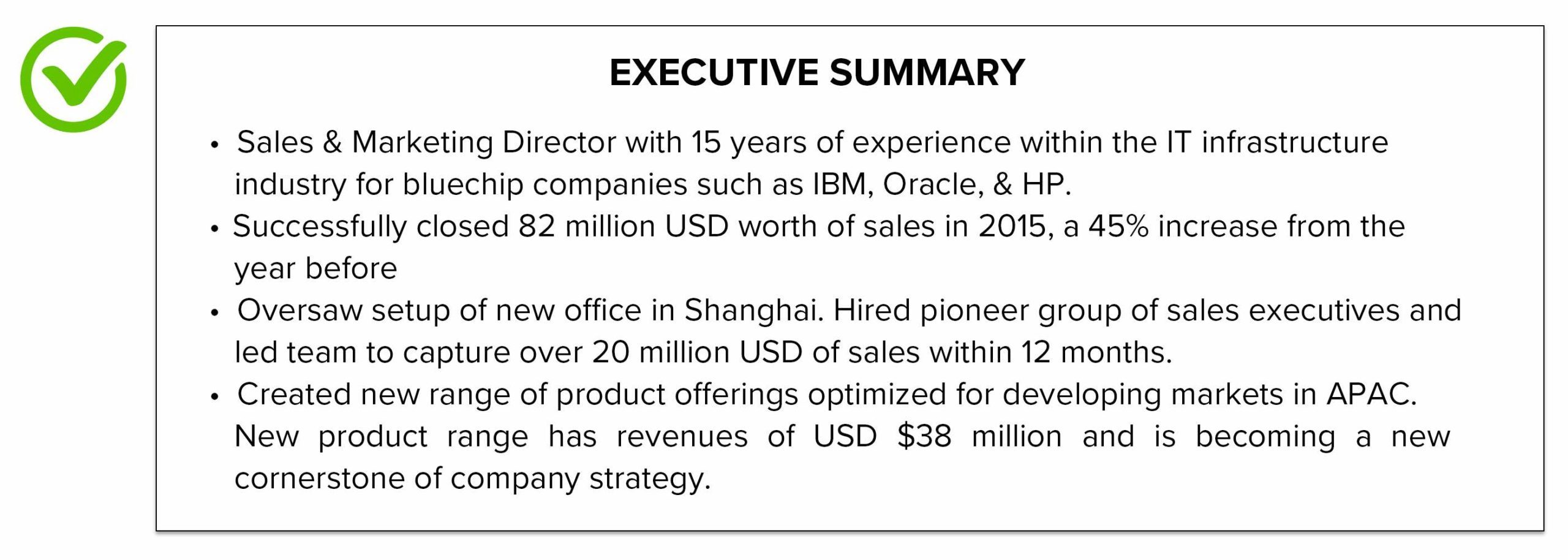
How To Craft Your Career Narrative

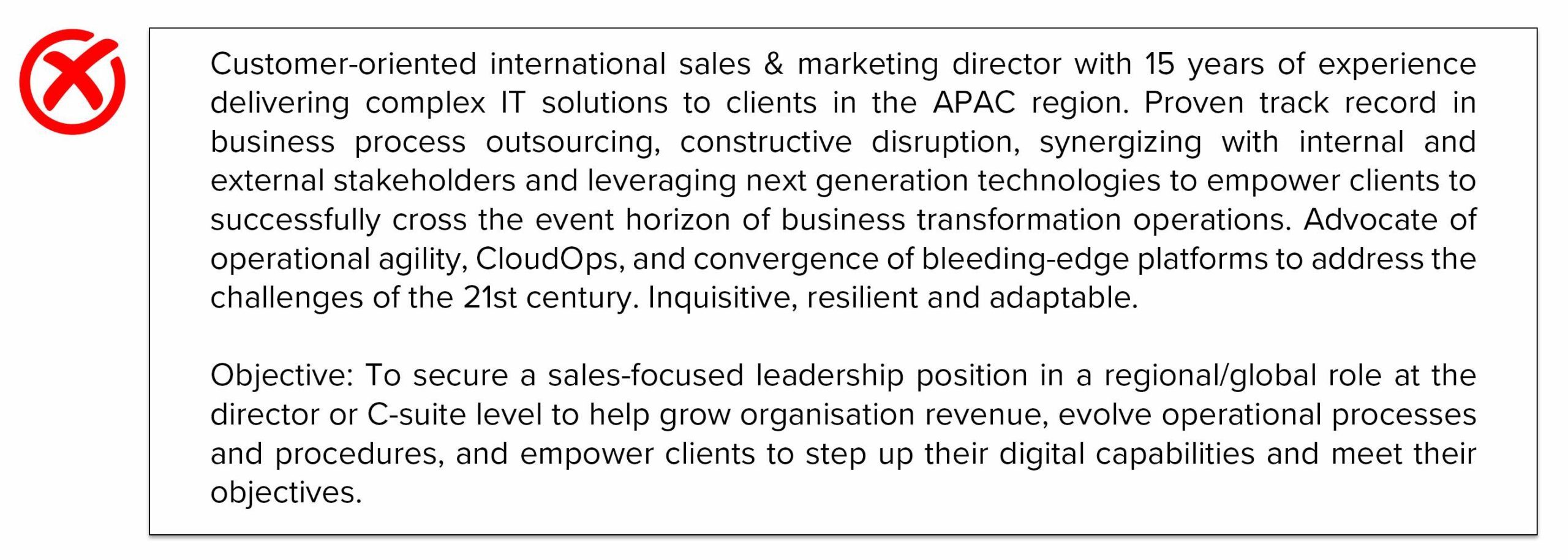
John’s original Executive Summary was literally a wall of text riddled with motherhood statements that don’t actually say anything. The poorly formatted paragraph also repels hiring managers at first glance.
His new Executive Summary is far more concise, and embedded with various metrics. At a glance, you can tell just how significant John’s achievements are.
Include Your Most Impressive Achievements

ResumeWriter Tip: Customise your CV for specific job ads by adding in 2 to 5 relevant target keywords from the ad you are eyeing. This ensures your CV can be read by ATS Scanners, and lands in the recruiter’s hands!
Craft a Powerful Opening Line To Each Work Stint


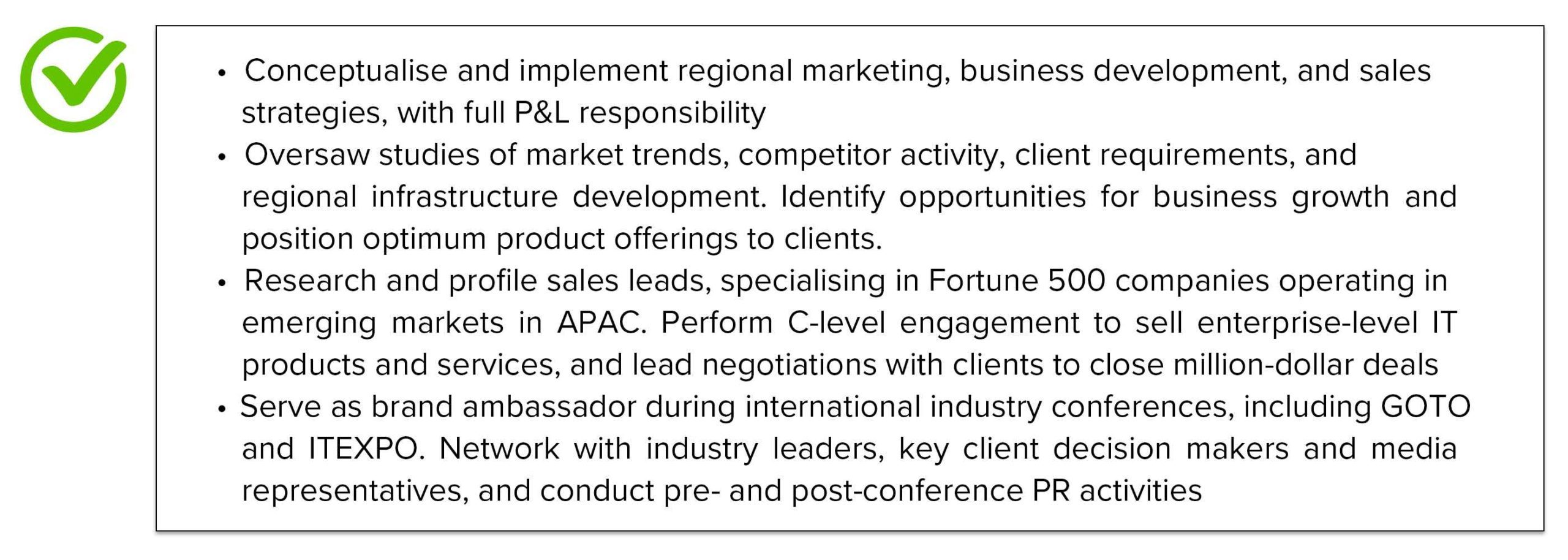
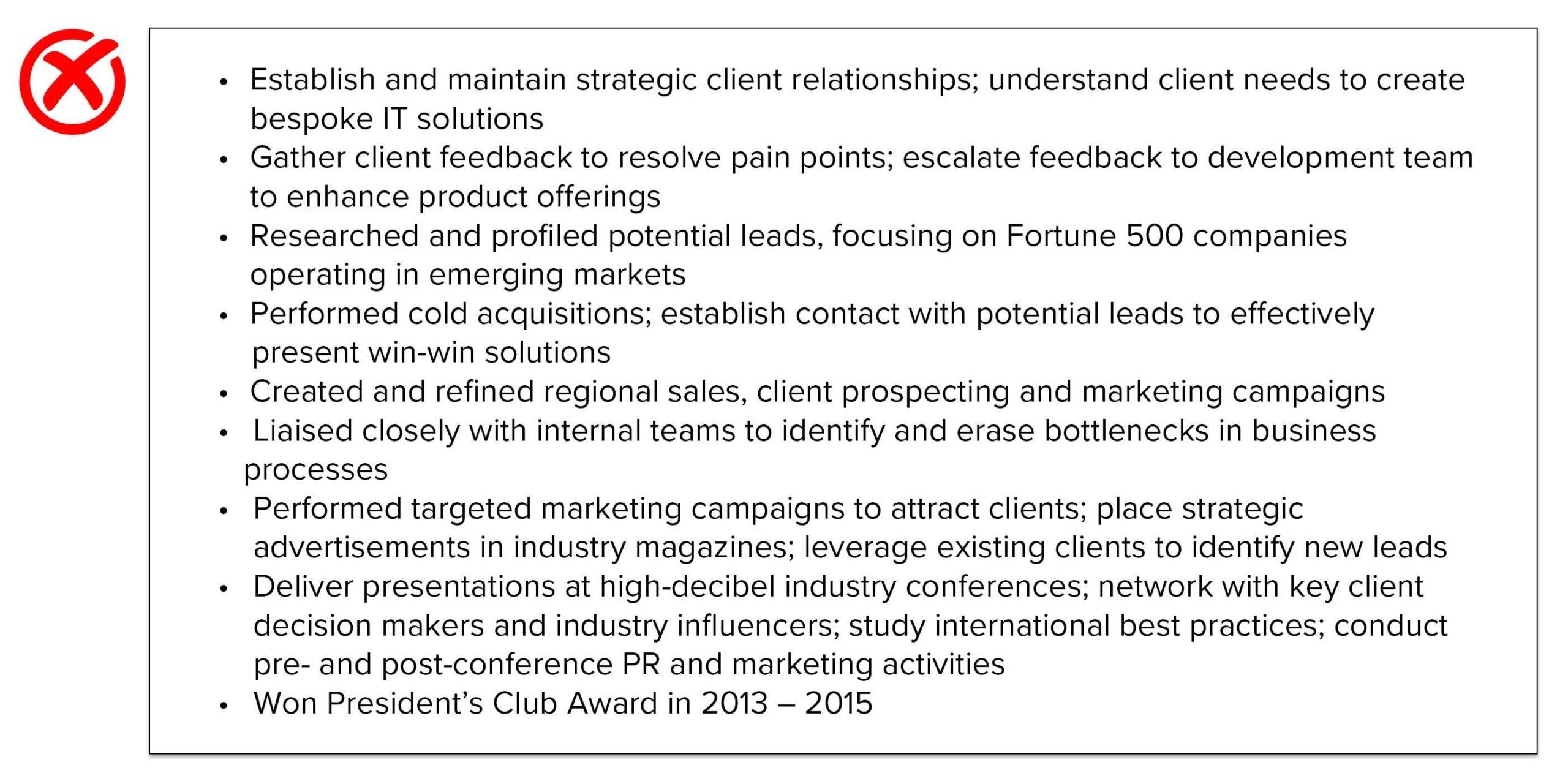
Use Power Verbs To Write Great Work Descriptions


Stand Out From The Pack – Highlight Your Achievements


1. Start with a fascinating resume summary.
It’s common for fresh graduates to list their career objectives at the top of their resumes. However, for jobseekers with more work experience, a well-curated professional summary will be more effective in grabbing the recruiter’s attention. Career objectives are about what you want. By contrast, a professional summary talks about what you can do for the company.
When crafting your summary, it’s helpful to think about your “why.” What drives you? Why do you do what you do? Identifying your purpose, source of inspiration, or philosophy will help you make your summary more unique and personal.
It’s also helpful to put yourself in the shoes of the reader. What traits and skills do you possess that they might be looking for? Keep the job advertisement in mind as you write. At the same time, make sure your summary is no longer than 2-3 sentences.
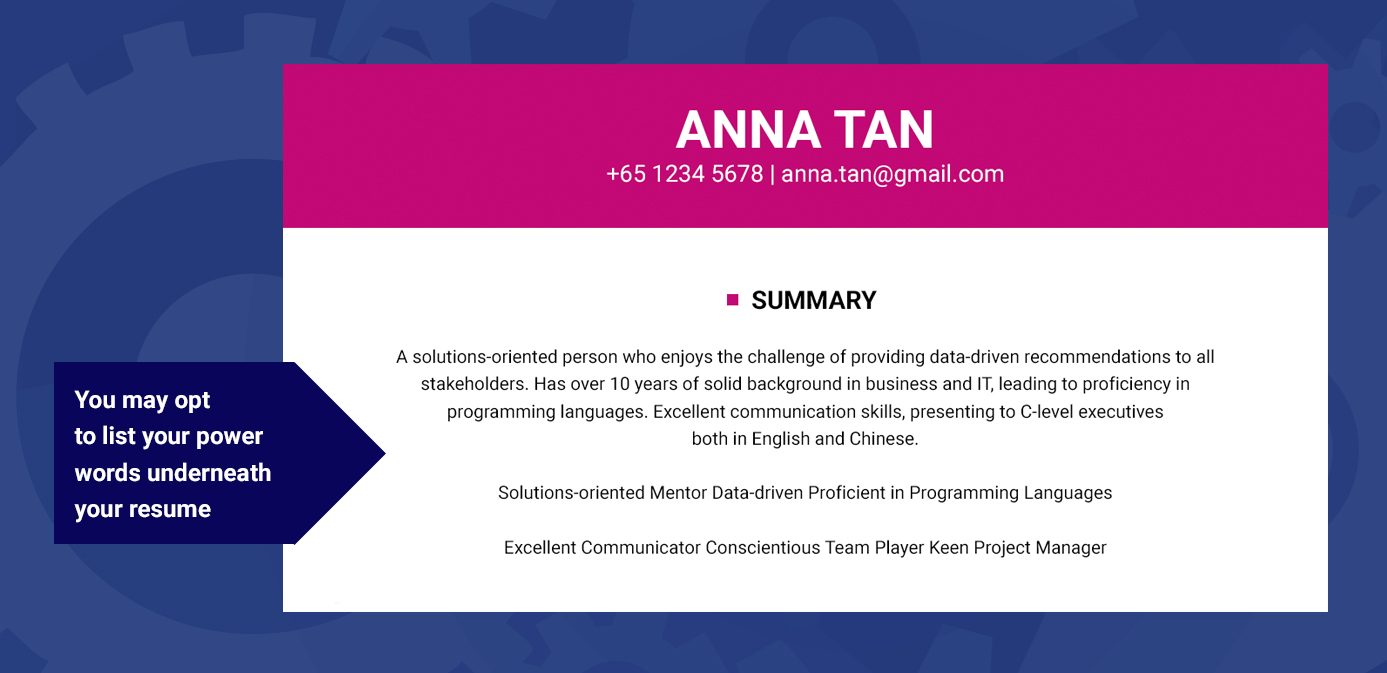
2. Keep it simple and professional.
When it comes to job applications, good first impressions are critical. Using a silly email address like “ [email protected] ” may make the hiring manager think you’re not serious. If you’re a fresh graduate, now is the time to create an appropriate email address using your first and last name.
Your resume should also be visually appealing and easy to skim. After all, TIME reports that “recruiters spend an average of six seconds reviewing an individual resume.” Therefore, limit your resume to one page as much as possible. If you have an extensive employment history, make sure not to go beyond two pages.
Take note that while most people use “resume” and “CV” interchangeably, they’re different in terms of length and use . While a resume is usually only 1-2 pages long, a CV is a more detailed account of your education and work history. CVs are generally used in academia or research and can go well beyond 3 pages.
Whether you’re writing a resume or CV, be consistent with your formatting. Use professional fonts such as Arial or Helvetica, and make sure your font is no smaller than size 12. When using numbers, recheck decimal places or the number of zeros.
Once you’re done, proofread your resume for spelling errors. You may also want to reconsider including your photo. After all, how you appear on your social channels may have more bearing than how you look in a photograph. Thus, provide a clean and professional result when employers conduct their social media search.
Source:
https://hbr.org/2022/05/how-to-write-a-resume-that-will-stand-out
https://www.resumewriter.sg/blog/how-to-write-a-winning-resume-your-ultimate-cv-guide/
https://www.jobstreet.com.sg/career-resources/job-hunting/best-tips-on-how-to-write-an-effective-resume/

